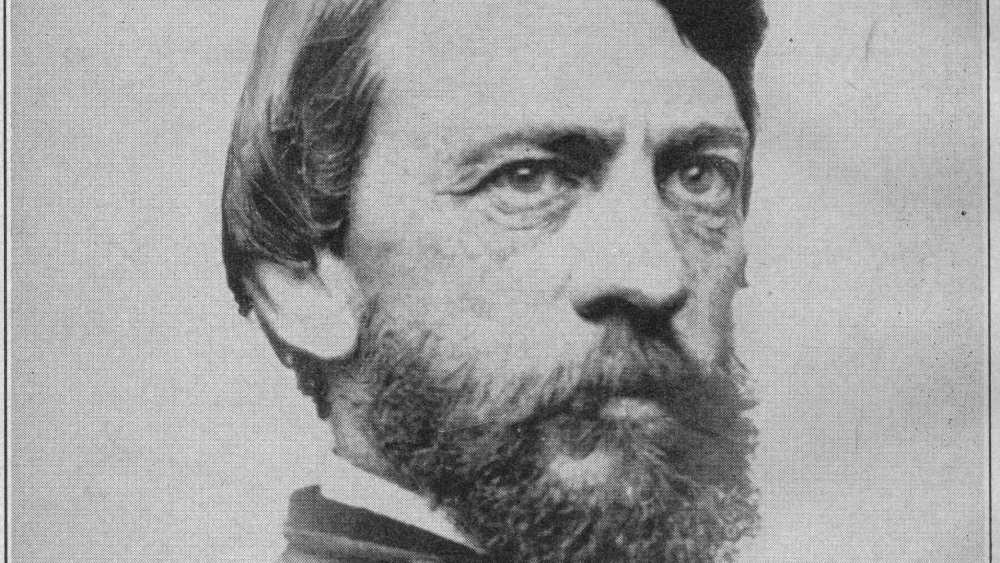When we think about the heroes of the American Civil War, names like Lincoln, Grant, or Lee often come to mind. Yet behind the front lines, one man quietly transformed how armies cared for their wounded — saving tens of thousands of lives and shaping the future of military medicine. That man was Major Jonathan Letterman, known today as the “Father of Battlefield Medicine.”
Early Life and Education
Jonathan Letterman was born on December 11, 1824, in Canonsburg, Pennsylvania. The son of a respected local physician, he grew up surrounded by medicine and service. His early education was guided by a private tutor before he attended Jefferson College, where he joined the Beta Theta Pi fraternity. He graduated in 1845 and went on to earn his medical degree from Jefferson Medical College in 1849.
That same year, at just 25 years old, Jonathan Letterman joined the U.S. Army Medical Department as an assistant surgeon. It was the start of a career that would take him from the swamps of Florida to the deserts of New Mexico — and eventually to the bloodiest battlefields of the Civil War.
Service on the American Frontier
Before the Civil War, Letterman served in a variety of remote and challenging posts. He was first stationed in Florida, where he treated soldiers during campaigns against the Seminole Indians. Later, he served at Fort Ripley, Minnesota, and Fort Defiance, New Mexico, aiding in the Army’s efforts against the Apache.
His time in these isolated posts taught him how difficult it was to care for wounded soldiers with limited resources. Supplies were often scarce, transportation was slow, and coordination between military and medical units was almost nonexistent. These early experiences would later inspire his revolutionary approach to battlefield medicine.
The Civil War: A Nation and a System in Crisis
When the Civil War broke out in 1861, the U.S. Army’s medical system was completely unprepared for the scale of suffering that followed. There was no organized ambulance service, no triage system, and no standardized method for treating and evacuating the wounded. Soldiers who survived the battlefield often died later from infection, shock, or neglect.
In May 1862, Letterman was appointed medical director of the Department of West Virginia. Just a month later, he was promoted to Medical Director of the Army of the Potomac, the largest Union force, under Surgeon General William A. Hammond. Hammond gave Letterman full authority to “do whatever necessary” to reform the Army’s medical organization — and Letterman took that mission to heart.
Revolutionizing Battlefield Medicine
At first, Letterman faced chaos. The Union army had just suffered heavy casualties during the Seven Days Battles, and the medical response had been disastrous. There were not enough ambulances, few field hospitals, and no system for prioritizing care.
Letterman responded with a complete overhaul. He created a three-tier medical system that became the foundation of modern military medicine:
- Field Dressing Stations near the front lines provided first aid and initial triage.
- Field Hospitals located at the division or corps level offered surgery and intensive care.
- General Hospitals in the rear areas handled long-term treatment and recovery.
He also introduced a dedicated ambulance corps under medical supervision — the first of its kind — and set up a system to distribute medical supplies efficiently.
These innovations were first tested at the Battle of Antietam in September 1862. Though the battle was one of the bloodiest in American history, Letterman’s system dramatically improved the speed and quality of care. By the Battle of Fredericksburg later that year, his methods had been fully implemented, proving their effectiveness even amid overwhelming casualties.
The Test of Gettysburg
The real test came in July 1863 at the Battle of Gettysburg, where the Union Army suffered over 14,000 wounded soldiers — and cared for nearly 7,000 Confederate wounded as well. Thanks to Letterman’s organization, the Army of the Potomac could treat and transport the wounded quickly and efficiently.
To handle the overflow of patients, Letterman established a massive temporary hospital northeast of Gettysburg on the George Wolf farm. The site was named Camp Letterman, the first large-scale medical encampment of its kind in American history.
The results spoke for themselves: while the Army’s mortality rate from battlefield wounds had been over 30% the year before, at Gettysburg it dropped to just 2%. Though official reports rarely mentioned him by name, his system had saved thousands of lives and permanently changed military medicine.
Frustration and Resignation
Despite his success, Letterman’s career took a difficult turn. His mentor, Surgeon General Hammond, faced political backlash for banning calomel, a mercury-based treatment once common in medicine. Hammond’s court-martial weakened Letterman’s position in Washington.
Disheartened and lacking institutional support, Jonathan Letterman resigned from the Army in December 1864, before the end of the war. In March 1864, Congress adopted his revolutionary system for the entire Union Army, cementing his lasting legacy.

Life After the War
After leaving military service, Letterman’s skills in organization caught the attention of railroad magnate Thomas A. Scott, who hired him to manage an oil exploration company in California. The venture ultimately failed, but Letterman and his wife, Mary Digges Lee, decided to stay in San Francisco.
In 1866, he published his memoir, Medical Recollections of the Army of the Potomac, a detailed account of his wartime experiences and the innovations he introduced. The book remains a key historical source for understanding the evolution of battlefield medicine.
Jonathan Letterman also entered public service once again, this time as Coroner of San Francisco County, a position he held from 1867 until his death.
Personal Loss and Final Years
Tragedy struck when Letterman’s wife, Mary, died of gastroenteritis at just 38 years old. Her death devastated him. Overcome by grief and battling his own health issues, Letterman’s condition declined rapidly. He passed away in San Francisco on March 15, 1872, at only 47 years old.
The nation honored him with a full military burial at Arlington National Cemetery beside his beloved wife.
Honors and Lasting Legacy
Decades after his death, the military formally recognized Letterman’s contributions. On November 13, 1911, the Army hospital at the Presidio in San Francisco was renamed Letterman Army Hospital in his honor — a fitting tribute to the man who revolutionized how armies care for their wounded.
His tombstone bears a simple but powerful inscription:
“Medical Director of the Army of the Potomac, June 23, 1862, to December 30, 1863, who brought order and efficiency into the Medical Service and who was the originator of modern methods of medical organization in armies.”
Jonathan Letterman’s story is one of intellect, innovation, and compassion. His ability to see beyond chaos and design a system rooted in logic and humanity saved countless lives — not just during the Civil War, but in every military conflict that followed.
More than 150 years later, every medic who rushes to aid a wounded soldier carries forward a piece of his legacy.










